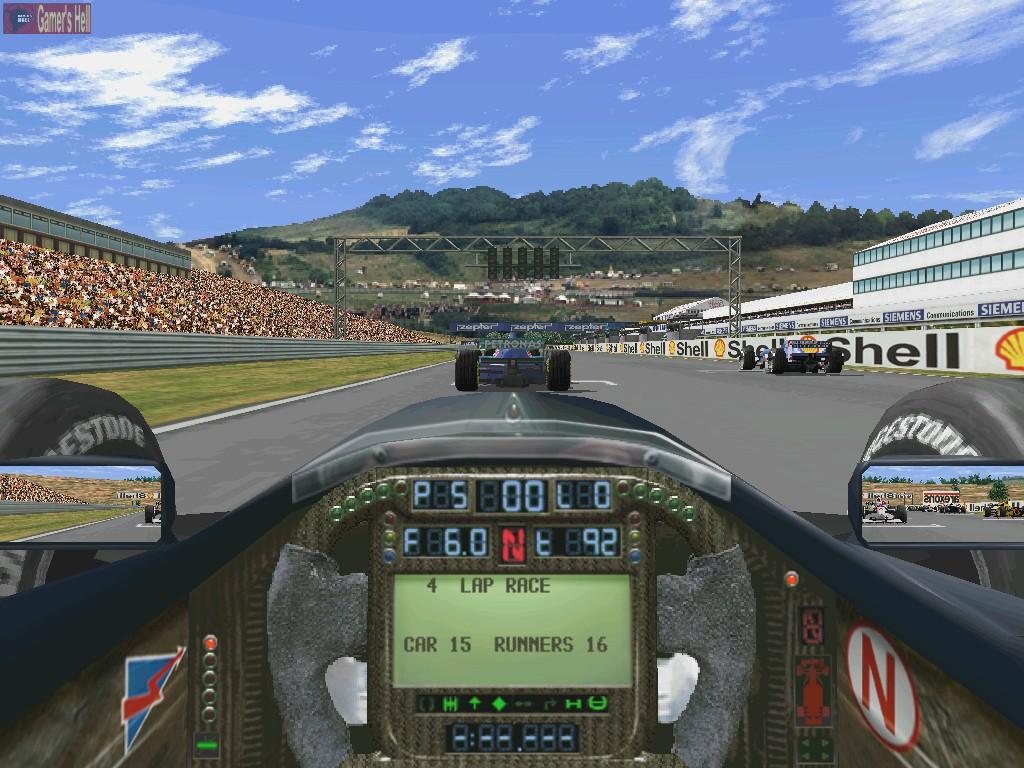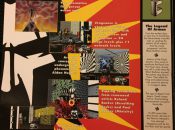
Grand Prix 3
Cheat Codes:
------------
Submitted by: rickHH
Hints:
------
* As is the case with most high-end racing simulations where exacting car
control is crucial, nothing will ruin your day like an over-burdened
processor and the jumpy frame rate and/or slow gameplay it will cause.
In GP3, depressing the O key while in the cockpit will reveal your current
processor occupancy rate, a figure that must be kept under 100 percent. If
you're running over that number, first try reducing the detail in your
mirrors. If you're still high, drop the resolution to 800x600. And if that
doesn't work, drop Trackside Objects to Low, then click the box beside
"Reduced texture detail (Hardware 3D)."All of these modifications will make
life easier for your processor without adversely affecting any of the game's
most critical visual cues.
* Properly braking in GP3 without locking the tires along the way is a difficult
thing to do. A wise approach is to hit the brakes hard when coming to a turn,
then back off as you (a) slow down and (b) hear the sounds of tire squeal and/
or see puffs of tire smoke. Alternately, a quick succession of brake "blips"
after the initial hard application should be enough to stop you while convincing
the program that you're not locking the tires. And use those brake markers!
If you see the 100 marker go flying by and you haven't yet started to brake,
it may be too late.
* Rain driving in GP3 presents a whole new batch of problems, as it does in real
life. It is important to remember that even a perfect setup won't allow you to
hammer the throttle. Instead, this is a time to practice your smoothness never
act hastily, and slowly introduce any changes in velocity and momentum. And in
the garage beforehand, try increasing the downforce and softening the suspension.
Of course, then you'll have to increase the ride height, too, in order to stop
the frame from contacting the ground.
Cornering:
----------
If you're a newcomer to automobile simulation racing, the most important
Driver Aid you have at your disposal is the Best Line. Turn this aid on
and a dotted line will appear on the pavement to show you where on the
track your car should be positioned to best set up for maximum speed
through the turns. Remember, entering a corner from the outside, cutting
inside to the apex, then swinging back outside during the exit--using
the curbs if you must is the only way to drive.
Alternate cars:
---------------
Type "123456789qwerty". A message will be heard to confirm correct code
entry.
Unique Cars:
------------
Press the Keys 1-9 then type in qwerty to get unique cars. If it works you
will hear David Coulthard say something about cheating.
Learning the circuits:
----------------------
The best way to learn to circuits is to watch other drivers. Start at Non-
Championship race at Ace level. Start a free-practice session, and when in
the pits simply move your view between the various drivers. Locate a decent
driver (I normally go for the first McLaren driver that comes along) and
watch how they driver the circuit. Making a little map and annotating it as
they go round is probably the best way. Watch several laps to make sure
they're consistant, and compare their lap times to the lap records.
Once you have this information, knock up a little crib sheet and put it next
to your monitor, so you can refer to it easily while you're learning. For
example, my crib sheet for the Melbourne race would be as follows
1 R 80 2 2 L FLAT OUT 3 R 55 1 4 L 85 2 5 R 135 4 6 R 65 2 7 L FLAT OUT 8 R
FLAT OUT 9 R 60 2 10 L FLAT OUT 11 L FLAT OUT 12 L 135 5 13 R 125 4 14 R 65
2 15 R 100 3 16 L 45 1 17 R 90 2
Columns are: 1 Corner number 2 Right or left turn 3 Suggested speed 4
Suggested gear.
Where it says flat out, that means it is a fast corner so just keep your
foot down and change up where appropriate. With this info, drive round the
course following these instructions and you will now problem learning the
course pretty well within a few laps. Bear in mind that the speeds and
gears here for David Coulthard's car setup (see it was he that I watched).
These figures may vary slightly if your car setup differs.
Gear ratios:
------------
On the question of gear ratios the manual tells you to set the first and sixth
gear according to the slowest and fastest parts of the track respectively.
But here's a better way to do it.
6th Gear - set the sixth gear for the fastest part of the circuit,
making sure that the final rev counter light comes on.
1st Gear - set your first gear quite high, depending on the actual
circuit - 28-30 for slow circuits, 32+ for fast circuits.
2nd Gear - leave a large gap to second gear - 7-8 for slow circuits,
10 for fast circuits.
3rd/4th/5th Gears - set them at even intervals between 2nd 6th. If the gaps
have to be un-even, make the lragest gap between 2nd and 3rd.
Idealing these gaps should be around 4 or 5, though may be
higher on fast tracks.
The result of this is that you will be a little slower exiting really tight
corners, any corner you need to drop down to first gear for, but you will be
faster exiting faster corners. You're accelleration will be much improved from
about 100mph upwards.







